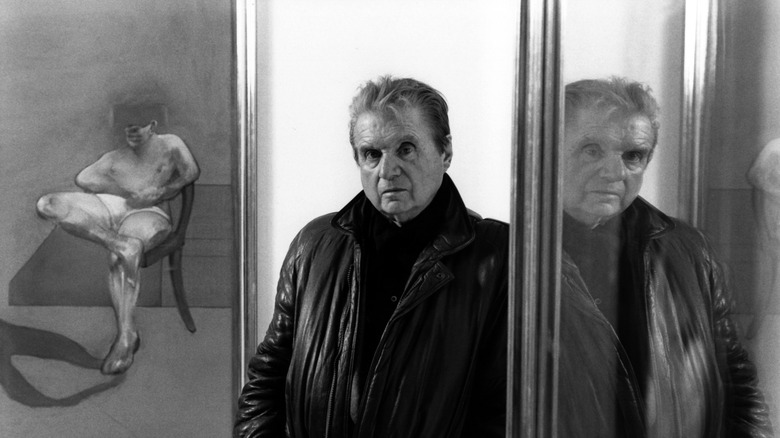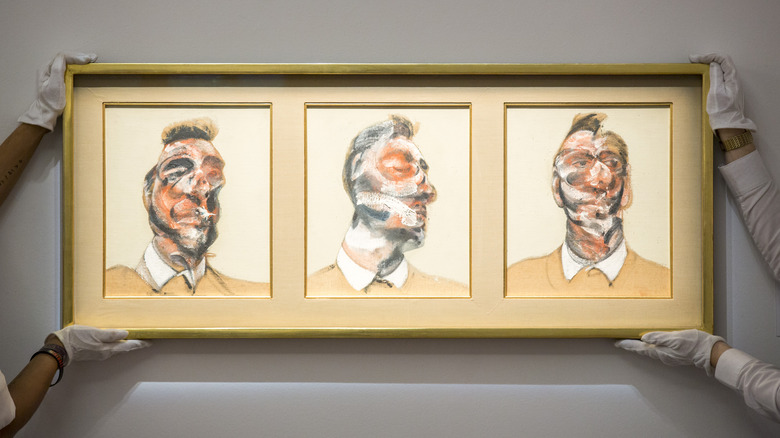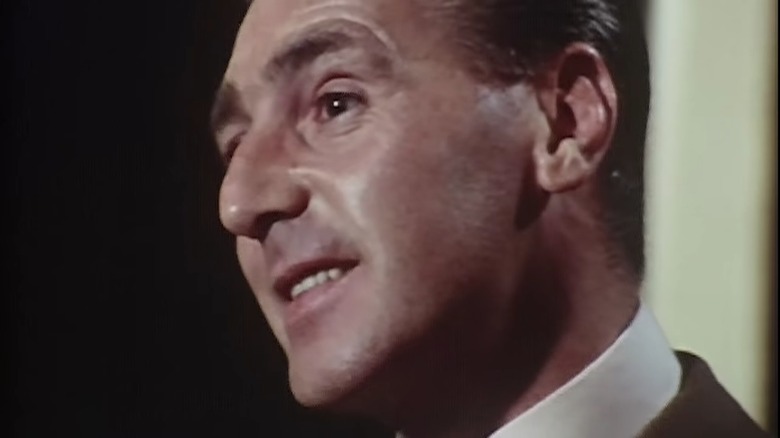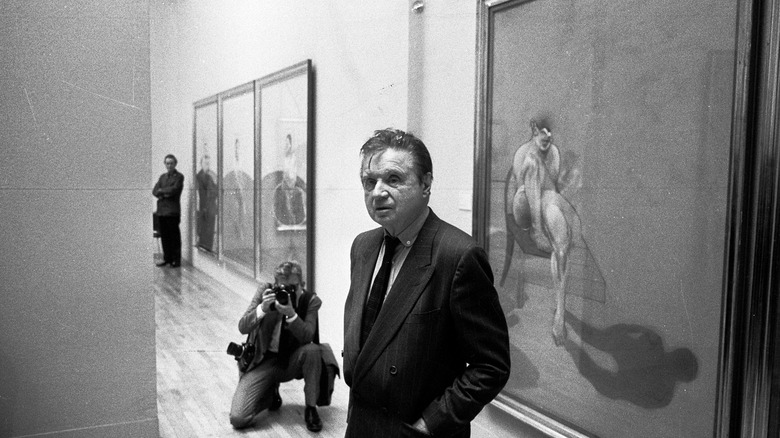The Distressing 1971 Death Of Francis Bacon's Lover
The paintings of the British artist Francis Bacon are some of the most instantly recognizable works of art of the 20th century. Highly idiosyncratic in his approach, Bacon made a conscious step away from both symbolism and purely representational art to create images of human forms that, while human, offer the body to the viewer in all its physicality, dynamism, and inherent violence: what his biographer Michael Peppiatt calls "the infinite interplay of flesh and feeling" (via "Francis Bacon: Anatomy of an Enigma").
Bacon's career was unusual when compared to that of many other celebrated British artists, in that his reputation was only made in later life, culminating in a career-defining show at the Grand Palais in Paris in 1971, a retrospective of his artistic journey to that point. Born in 1909, Bacon was by then in his early 60s and had faced many trials and tragedies. But the high point of Bacon's career was about to go hand-in-hand with one of the most shocking and disturbing incidents of his private life. The painter's longtime friend, lover, and artistic collaborator, George Dyer, had died in tragic and horrifying circumstances in their hotel room.
George Dyer: Bacon's most important muse
Francis Bacon worked with many models over the course of his long career as a boundary-breaking painter, but none is as present in his work over the decades as George Dyer, whom he first met in 1963 and would remain a constant source of inspiration throughout Bacon's life.
Legend has it that Bacon first encountered Dyer when the latter attempted to burgle the artist's home, but rather than manage to sneak in and rob the place Dyer is said to have fallen through a skylight right in front of Bacon, who found him instantly attractive. Though this story has been reported by the likes of The Irish Times, according to "Francis Bacon: Anatomy of an Enigma" the pair met at a pub in the Soho area of London, a notorious spot for bohemian drinkers. Dyer was a petty criminal and recidivist who was little educated compared to Bacon. But the artist was attracted to Dyer — who was a quarter century younger than him — for his rugged good looks, which despite his tough appearance masked a vulnerable and troubled personality.
Dyer became Bacon's muse and the subject of many of his most famous paintings, including "Three Studies for Portrait of George Dyer (on Light Ground)," painted shortly after the pair first met and became lovers. The painting was one of those exhibited at the Grand Palais in 1971, showing how important Bacon himself considered it in his oeuvre.
The death of George Dyer
Though George Dyer ultimately became a successful model for his lover Francis Bacon, he remained little interested in the art itself. According to Michael Peppiatt — who knew both Dyer and Bacon — the artist's muse resisted sharing his own views on art, even those pieces in which he featured, with critics he encountered as he accompanied his famous partner to gallery openings and other public events. Instead, he would share his incredulity that such horrible-looking paintings could attract such incredible prices from gullible art collectors. Nevertheless, he loved and respected Bacon as an artist and public figure.
Apart from art, Dyer and Bacon's relationship was primarily characterized by alcohol, to which Dyer increasingly turned as it became clear he was considered an outsider to the art world in which Bacon was becoming ensconced. Hours before the opening of Bacon's Grand Palais retrospective, staff at the hotel where the artist and his muse were staying discovered Dyer's dead body in the bathroom of their suite. Though the official report claimed the death was accidental, Bacon later admitted that Dyer had died by suicide.
Bacon's response to the death of his lover, friend, and muse is astonishing. Rather than withdraw from his public engagement, he reportedly continued as if nothing had happened, mingling with critics, journalists, and art dealers as the event rolled on. His friends later commended him on his nerve, but that Bacon was able to keep a brave face in the aftermath of the loss of his longtime lover and muse didn't mean that the death didn't deeply affect him.
If you or someone you know is struggling or in crisis, help is available. Call or text 988 or chat 988lifeline.org
How Bacon turned Dyer's death into art
Francis Bacon was obviously in a state of shock after the discovery of George Dyer's body in his Paris hotel room, and the image of the horrible scene he encountered that day certainly remained in his mind's eye and went on to dominate his work in the years that followed.
The work Bacon began immediately following the Grand Palais exhibition revealed that the artist was obsessed with the image of Dyer's body he had witnessed in the Paris hotel room, with his earlier portraits of his model informing a series of triptychs that seemed to show Dyer in various stages of semi-lifelessness. Bacon felt that he was partly responsible for Dyer's death: "I feel profoundly guilty about his death. If I hadn't gone out, if I'd simply stayed in and made sure he was all right, he might have been alive now." Bacon employed images of mythical furies consuming Dyer's body which were emblematic of his feelings of guilt surrounding the death.
In his final years, Bacon, who died in 1992, went on to revisit several of the themes of his early work, but nothing after 1971 rings with the sheer emotional power of his meditations on the death of George Dyer. "The hardest thing about aging is losing your friends," Bacon said (via "Francis Bacon") My life is almost over and all the people I've loved are dead."



